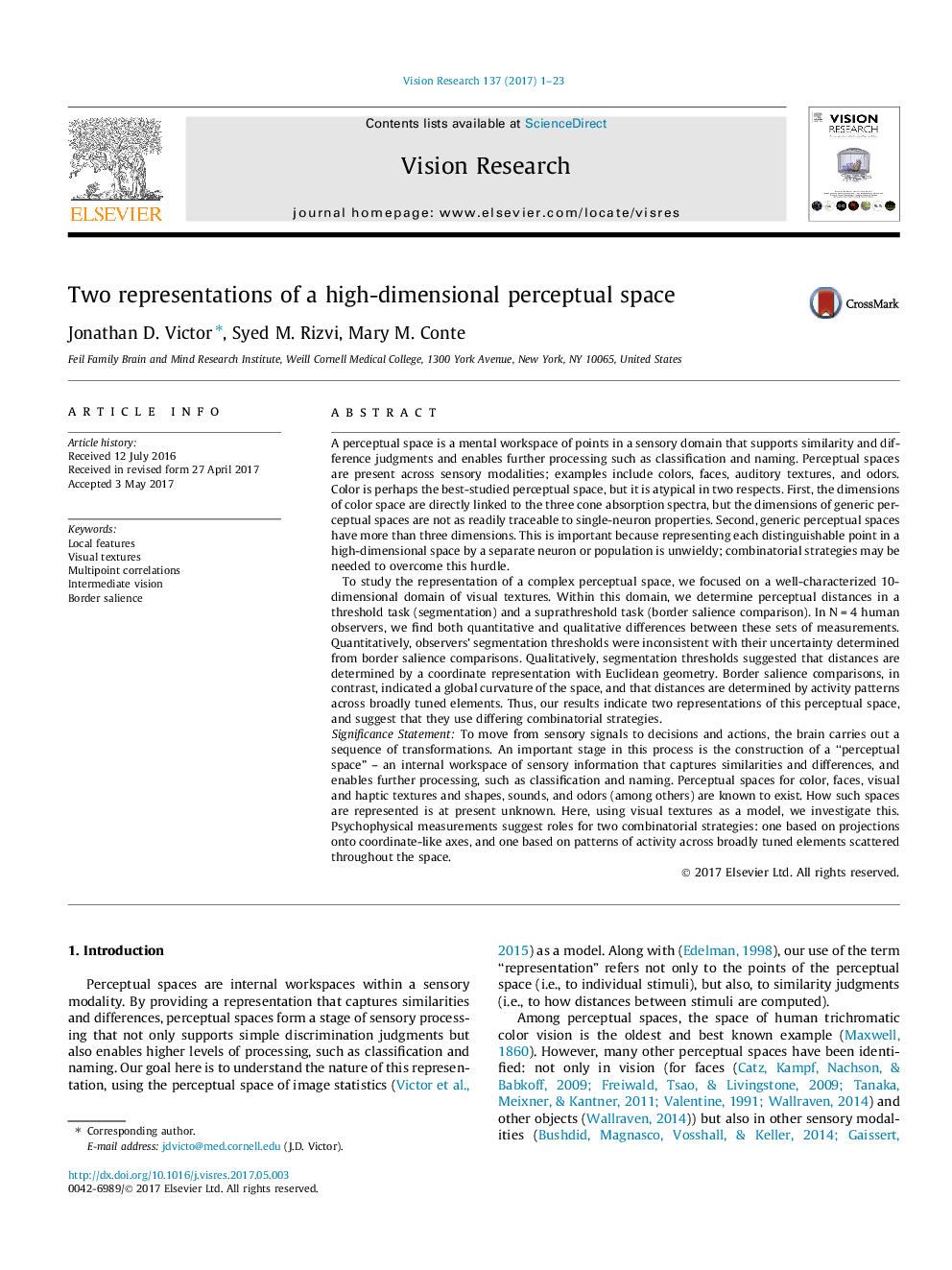| Article ID | Journal | Published Year | Pages | File Type |
|---|---|---|---|---|
| 5705865 | Vision Research | 2017 | 23 Pages |
Abstract
To move from sensory signals to decisions and actions, the brain carries out a sequence of transformations. An important stage in this process is the construction of a “perceptual space” - an internal workspace of sensory information that captures similarities and differences, and enables further processing, such as classification and naming. Perceptual spaces for color, faces, visual and haptic textures and shapes, sounds, and odors (among others) are known to exist. How such spaces are represented is at present unknown. Here, using visual textures as a model, we investigate this. Psychophysical measurements suggest roles for two combinatorial strategies: one based on projections onto coordinate-like axes, and one based on patterns of activity across broadly tuned elements scattered throughout the space.
Keywords
Related Topics
Life Sciences
Neuroscience
Sensory Systems
Authors
Jonathan D. Victor, Syed M. Rizvi, Mary M. Conte,
